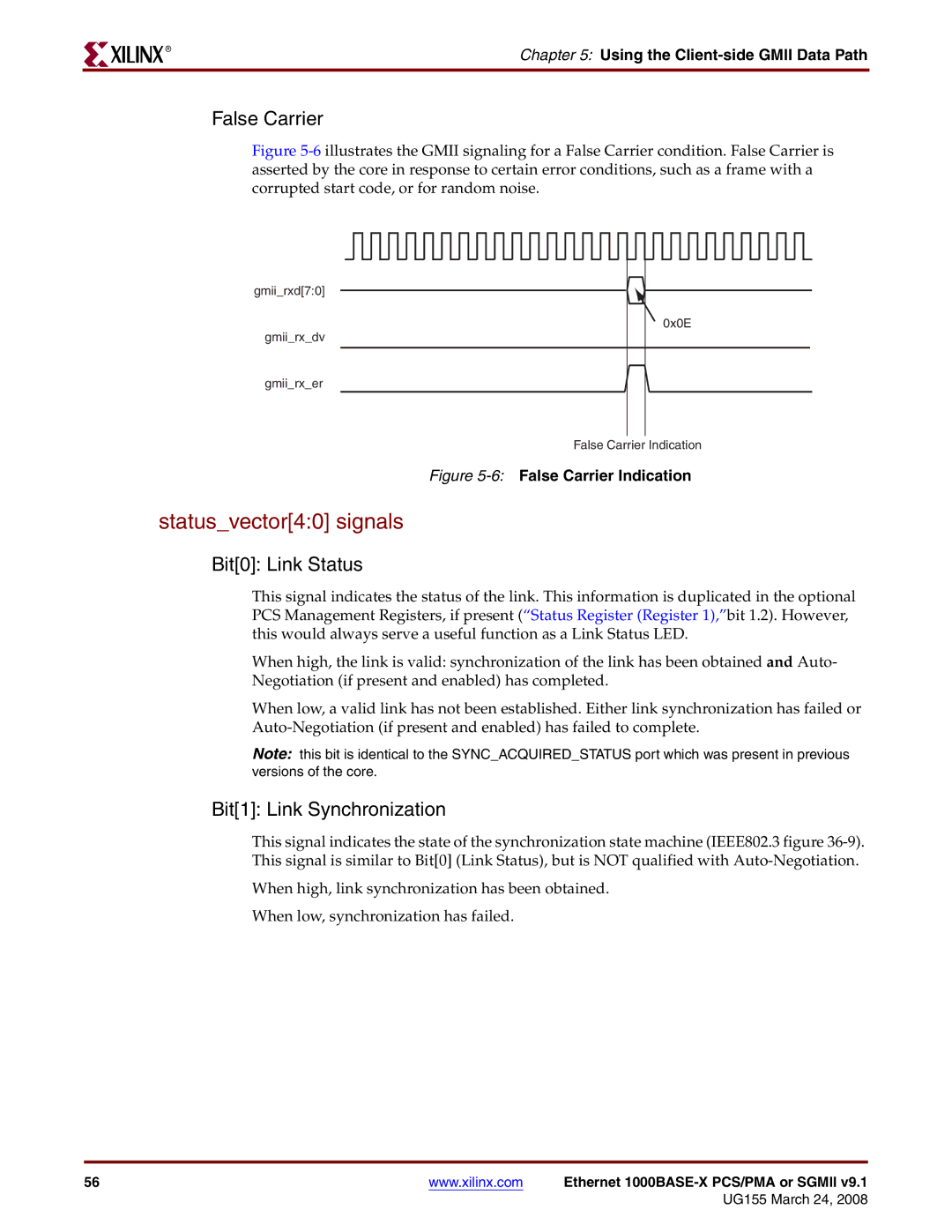
R
Chapter 5: Using the Client-side GMII Data Path
False Carrier
Figure 5-6 illustrates the GMII signaling for a False Carrier condition. False Carrier is asserted by the core in response to certain error conditions, such as a frame with a corrupted start code, or for random noise.
gmii_rxd[7:0]
0x0E
gmii_rx_dv
gmii_rx_er
False Carrier Indication
Figure 5-6: False Carrier Indication
status_vector[4:0] signals
Bit[0]: Link Status
This signal indicates the status of the link. This information is duplicated in the optional PCS Management Registers, if present (“Status Register (Register 1),”bit 1.2). However, this would always serve a useful function as a Link Status LED.
When high, the link is valid: synchronization of the link has been obtained and Auto-
Negotiation (if present and enabled) has completed.
When low, a valid link has not been established. Either link synchronization has failed or
Note: this bit is identical to the SYNC_ACQUIRED_STATUS port which was present in previous versions of the core.
Bit[1]: Link Synchronization
This signal indicates the state of the synchronization state machine (IEEE802.3 figure
When high, link synchronization has been obtained.
When low, synchronization has failed.
56 | www.xilinx.com | Ethernet |
|
| UG155 March 24, 2008 |
